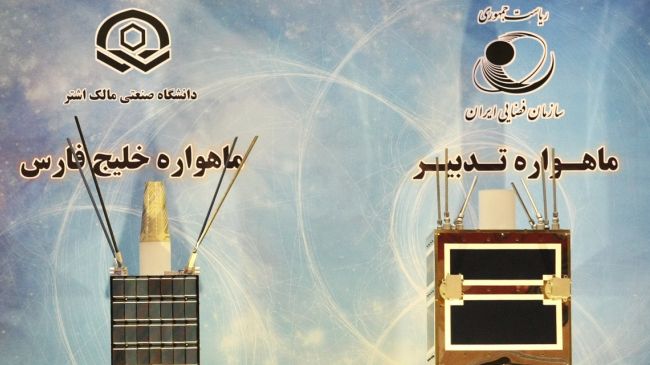Iran to put three satellites into orbit by yearend

Iran plans to place three indigenously designed and manufactured satellites into orbit by the end of the current Iranian calendar year (March 20, 2014).
Speaking to reporters on the sidelines of a Monday ceremony marking the National Space Technology Day, deputy head of Iran Space Agency (ISA) Hamid Fazeli stated that Sharif Sat, Tadbir (Prudence) and Fajr (Dawn) satellites will be lifted into space by the end of the year.
He added that Fajr is a monitoring satellite, which has been developed by Iranian experts at Iran Electronics Industries, known as SAIRAN.
Fajr is said to be a reconnaissance satellite powered by solar energy. Iran plans to send up the satellite on board the upgraded Safir (Ambassador) carrier rocket.
Fajr satellite will reportedly be placed in elliptical orbit of 400 km in radius, and will remain in space for a year and a half.
Tadbir, developed by students and academics at Iran University of Science and Technology in 5 months, weighs about 50 kilograms and is an upgraded version of the Navid-e Elm-o Sanat (Harbinger of Science and Industry) satellite, which was put into space earlier.
The satellite has higher precision in taking photos compared to its predecessor, and its interactive computer system enables 16 users to send and receive information in any geological position. It is equipped with the Global Positioning System (GPS) and can be tracked anytime from a ground station.
Tadbir has undergone compatibility tests, awaiting launch on a satellite carrier.
Sharif Sat has been developed by Iranian students and academics from Sharif University of Technology.
Sharif Sat reportedly weighs less than 50 kilograms and will be launched onboard the indigenous Safir B-1 carrier. It is planned to be placed into a Low Earth Orbit (LEO) at an altitude between 350 kilometers (217 miles) and 500 kilometers (310 miles) above the Earth’s surface.
The satellite will capture images with a high degree of accuracy of less than 10 meters and then transmit them to stations on earth.







